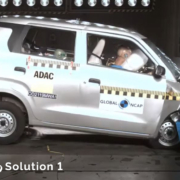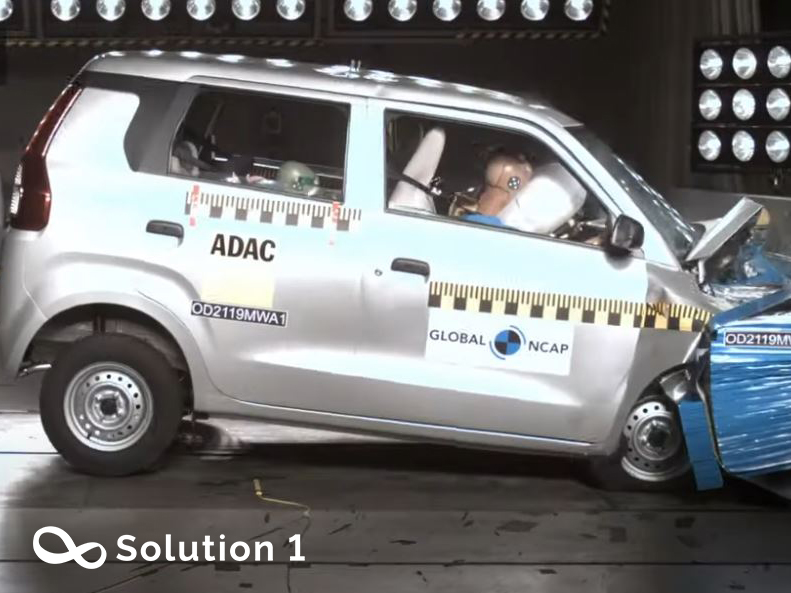Global Automotive-Safety Policy in 2025 and Its Industrial Consequences
The United States was the first country to introduce a New Car Assessment Program (NCAP). Launched in 1979 by the National Highway Traffic Safety Administration (NHTSA) to meet a 1972 legislative mandate, it adopted a 56 km/h (35 mph) frontal-impact crash test—stricter than the 48 km/h (30 mph) requirement in the Federal Motor Vehicle Safety Standards (FMVSS)—to encourage manufacturers to strengthen body structures and add safety features. NHTSA stresses that the program has indeed pushed carmakers to design vehicles that consistently achieve high ratings.
Europe followed in 1997 with the establishment of Euro NCAP, led by the UK Department for Transport’s research laboratory and backed by several European Union governments. It has since served as an authoritative and independent evaluation mechanism, publishing star-rated results for the European market.
Today, equivalent schemes have proliferated globally, reflecting the universal commitment to automotive safety. From ANCAP in Australia and New Zealand to Latin NCAP in Latin America, C-NCAP in China, JNCAP in Japan, and the upcoming Bharat NCAP in India, the automotive industry is witnessing a harmonized approach to safety. Global NCAP’s ‘Safer Cars for India’ consumer tests further underscore this international expansion.
It is essential to distinguish between mandatory rules and voluntary ratings. In the US, the FMVSS are legally binding, while NCAP scores remain voluntary information. In contrast, the EU combines mandatory UNECE regulations with Euro NCAP ratings, which spur further innovation.
Recent NCAP updates worldwide also evaluate active safety technologies, including automatic emergency braking (AEB), lane-keeping assistance, and blind-spot detection. The United States, for example, announced in 2022 that AEB with pedestrian detection and blind-spot warning will be added to NCAP, closing the gap left by crash-only testing.
- Major-market policy evolution
Europe. As of 2022, the EU has been phasing in the General Safety Regulation II, which requires new vehicles to be equipped with intelligent speed assistance, AEB, driver-drowsiness alert, emergency lane-keeping, and other advanced safety features. Alcohol-interlock interfaces, event data recorders, electronic stability control, and tire-pressure monitoring are also compulsory. Although post-Brexit Britain has not adopted every element, most models still use EU-spec software. Euro NCAP’s future roadmap promises to add further ADAS and automated driving tests.
In 2024, the NHTSA finalized a rule mandating that starting in 2029, all passenger cars and light trucks must be equipped with pedestrian-avoidance braking (PAB), a measure expected to save 360 lives per year and significantly reduce rear-end and pedestrian crashes. The NCAP scoring method is being overhauled to include blind-spot warning, lane-keeping support, and pedestrian AEB, with phased targets for the next decade. NHTSA is also revising reporting rules for driver-assistance crashes and expanding its exemption program for autonomous models.
China: Official and consumer bodies have tightened their requirements. The 2024 C-NCAP revision introduced driver-monitoring into the score and gave greater weight to the protection of pedestrians and cyclists. Regulators have published new guidelines on ADAS marketing and liability, banning the overuse of the term “autonomous driving” and scrutinizing OTA updates, especially after incidents such as the 2025 Xiaomi SU7 crash. Major domestic makers now install driver-monitoring systems as standard, and suppliers offer multi-sensor fusion platforms to meet the new rules.
In 2023, India launched its Bharat New Car Assessment Program (Bharat NCAP). Of the first ten SUVs tested, nine scored five stars. Safety rules are advancing fast, and the future promises even more stringent regulations: a driver’s airbag became mandatory in 2019, and dual front airbags in 2022. In May 2025, the transport ministry ordered that, from April 2026, all vehicles carrying more than eight people must have AEB, drowsiness alerts, and lane-departure warnings; existing models must comply by October 2026. Bharat NCAP 2.0 will add ADAS tests, indicating the direction of future safety regulations.
- Advanced technologies and their regulation
All major jurisdictions are writing active safety features into law. Under the EU’s GSR II, for example, intelligent-speed assistance uses sign recognition and map data to warn of speeding, and AEB intervenes for vehicles and pedestrians; studies show that AEB can cut rear-end collisions by about 50 percent and pedestrian hits by 30 percent. The US FMVSS No. 127 will require new vehicles to avoid or mitigate crashes at up to 90 mph against cars and 45 mph against pedestrians.
China’s ADAS market is evolving rapidly, but cost and reliability remain significant hurdles. Synthetic data and virtual simulation are widely used to reduce the need for real-world testing, while extreme weather conditions continue to pose challenges to sensor stability. In India, unclear lane markings limit lane-keeping effectiveness; experts there argue that infrastructure upgrades should precede the full rollout of Advanced Driver Assistance Systems (ADAS).
- Carmaker’s perspective: resistance and cooperation
For manufacturers, stricter rules pose both technical and cost challenges. Many once complained that mandatory features would raise prices. US firms initially opposed NCAP, yet market pressure turned high ratings into an informal standard. Today, those same firms advertise five-star scores.
In smaller markets like Taiwan, distributors find it easier to comply with local rules if they import EU- or US-spec high-trim versions. This approach ensures that consumers in these markets have access to the same safety technology that is available as an option in other markets. Policymakers, recognizing the importance of incentives, have adopted a blended approach: mandatory requirements (such as event recorders or connected vehicle monitors) coupled with incentives. Global NCAP’s Safer Choice Award, for instance, which demands dual five-star ratings and a suite of advanced features, not only recognizes compliance but also steers consumer demand. Insurers and fleet buyers, in turn, can reward safer models with discounts, further promoting automotive safety.
- Implementation in emerging markets
Emerging economies are setting up their regimes. India’s Bharat NCAP forces local makers to improve design; ASEAN NCAP under Malaysia’s MIROS requires ABS and ESC as a baseline. A 2024 ASEAN test of a new electric SUV showed six airbags, ESC, city/highway AEB, blind-spot, and pedestrian detection—proof that active safety is spreading. Brazil now mandates ESC and AEB on all new cars from 2024. Yet enforcement can be patchy, and cost constraints still prompt some manufacturers to remove features from low-priced versions. Carmakers respond with global designs adapted locally, offering advanced protection for high-end or export models and basic compliance for entry-level ones.
- Design and industrial impact
Stricter rules are reshaping vehicle engineering, requiring structures to absorb crashes more effectively while accommodating sensors and electronic architectures that support powerful processors and fast networks for ADAS and connectivity. Investment rises across the supply chain: more radar, cameras, lidar, and high-performance chips are required. Although costs increase, brands gain from a safety image and can charge a premium. OEMs collaborate with Tier-1 suppliers, such as Bosch, ZF, and Huayu, to co-develop ADAS. They are also building local test grounds and R&D labs to meet regional standards.
Global policy is shifting toward an integrated safety philosophy. The US National Roadway Safety Strategy, for instance, already includes pedestrian protection, and its NCAP will add more ADAS tests over the next decade. China and the EU are drafting more rigid rules for automation and cybersecurity. Experts advise that regulation should match technological progress and public acceptance with phased rules and harmonized international standards. Virtual simulation and synthetic data can accelerate validation; cross-border cooperation on uniform labels and vulnerable-road-user protection would enable manufacturers to design one for multiple regions.
Future safety policy and industrial development must evolve together. Governments need to keep regulations current for autonomous and intelligent transport; carmakers must invest in R&D and flexible supply chains to reconcile higher safety with affordability and reliability. Only through a partnership of government, industry, and academia can traffic deaths be reduced and the vision of zero fatalities be approached.





